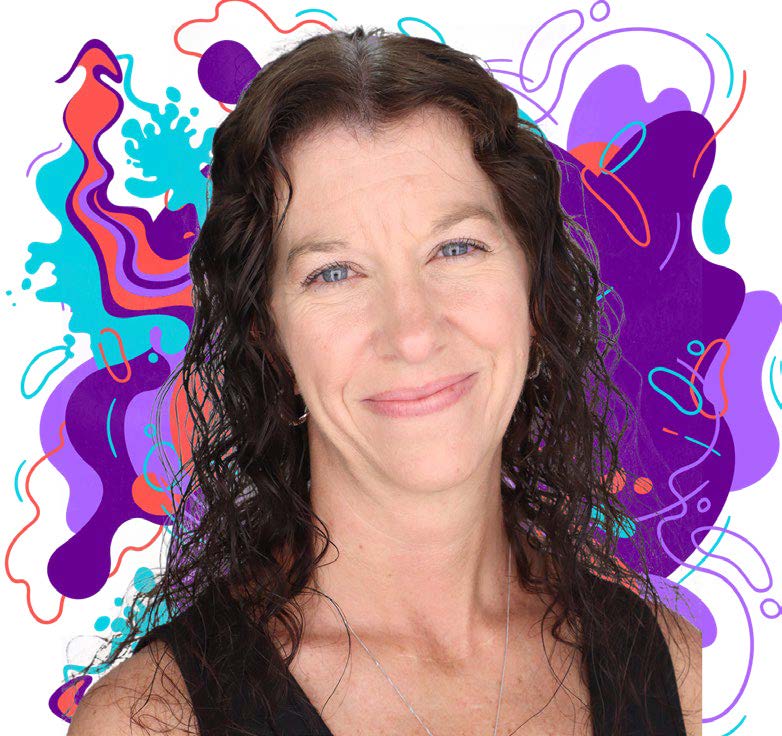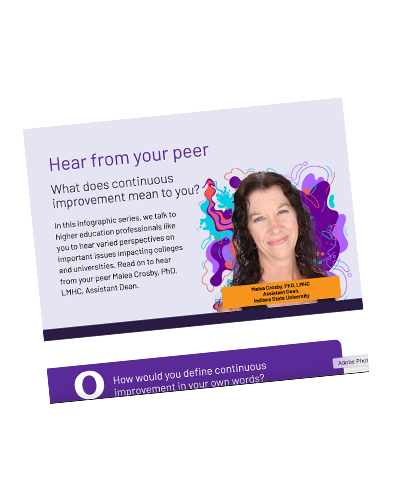In this infographic series, we talk to higher education professionals like you to hear varied perspectives on important issues impacting colleges and universities. Read on to hear from your peer Malea Crosby, PhD, LMHC, Assistant Dean.

Malea Crosby, PhD, LMHC
Assistant Dean,
Indiana State University


Continuous improvement is the process of using data to drive change. It is continuously reviewing data, feedback, and outputs to identify potential areas for improvement. Even when things look “perfect,” continuous improvement allows us to look for the positives and the areas to make change.
It is challenging to get faculty to understand that continuous improvement does not mean things are going poorly. It means that, even when things are going really well, there is room for improvement.
Continuous improvement helps us to ensure we are regularly reviewing data, identifying strengths, and finding areas for improvement. Next we identify possible solutions to address those needs and share them with various stakeholder groups.
Even when things look “perfect,” continuous improvement allows us to look for the positives — and the areas to make change.
I collect and review all kinds of data on a regular basis. Data and feedback collected from stakeholder groups are shared with others. This is all done through my office. The primary change in my day-to-day is that the work of data collection and continuous improvement never stops — it is continuous — so I am always thinking from an improvement lens with everything I do.
Continuous improvement is like a circle — there is no end. No matter what point you jump in at, you are never finished.
The “my program is perfect” mentality. There are certain programs and faculty that I work with that inflate data because they “like” a student or believe the student will “be amazing as a teacher.” It is challenging to get faculty to understand that continuous improvement does not mean things are going poorly. It means that, even when things are going really well, there is room for improvement.
Continuous improvement helps us to ensure we are regularly reviewing data, identifying strengths, and finding areas for improvement.
Continuous improvement is like a circle — there is no end. No matter what point you jump in at, you are never finished.
The work of data collection and continuous improvement never stops.
Ready to tackle continuous improvement in a new way? Learn how Watermark can help.

See how our tools are helping clients right now, get in-depth information on topics that matter, and stay up-to-date on trends in higher ed.